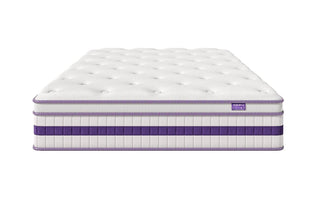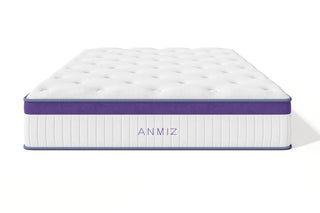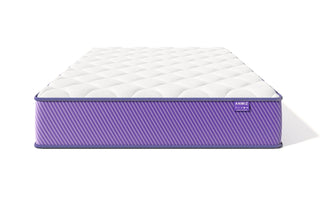Pressure Relief and Mattresses
We occasionally receive free products for testing and take part in affiliate programs, which means we may earn a commission if you purchase items through links on our site. For full details, please refer to our disclosure page.
Pressure relief is one of the most important factors to consider when choosing a mattress because it directly affects your sleep quality and overall well-being. Many sleepers struggle with joint pain, back pain, or soreness, which can often be eased with a mattress that offers proper pressure relief.
At Dweva, we emphasize pressure relief throughout our mattress testing process and comprehensive reviews. But why is it so important—and how do we test for it? Let’s take a closer look.

Why Pressure Relief Matters in a Mattress
Pressure relief refers to a mattress’s ability to distribute body weight evenly and reduce pressure on areas like the shoulders, hips, and lower back. A bed with good pressure relief alleviates tension, helps maintain spinal alignment (especially for side sleepers), and reduces discomfort or pain caused by uneven weight distribution.
How We Test Mattresses for Pressure Relief
Measuring pressure relief is both an art and a science. Here’s how we do it:
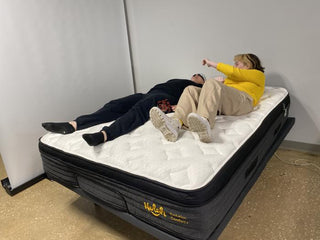
Expert Testing
Multiple testers with varying body types and sleeping positions evaluate each mattress. They record how cushioned they feel and how well the mattress cradles their joints.
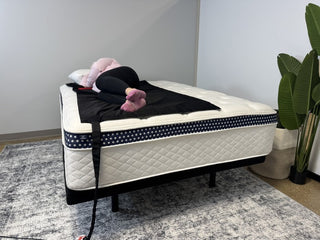
Pressure Mapping
We use an electronic mat that generates a color-coded “pressure map.” This visual shows areas of the body under the most strain—colors like yellow, orange, and red indicate higher pressure, while blue and green mean excellent relief.

PSI Measurements
The mat also calculates PSI (pounds per square inch) to quantify pressure. For back sleepers, a PSI of 12 or below is ideal, while for side sleepers, 14 or lower indicates strong pressure relief.
This data allows us to assign each mattress a pressure-relief score out of 5, helping you understand exactly how each performs in this category.
The Best Firmness Level for Pressure Relief
Mattress firmness is rated on a 1–10 scale, where 1 is the softest and 10 is the firmest. The ideal firmness for pressure relief depends on your body type and sleeping position, but most sleepers benefit from a mix of gentle softness and solid support to prevent excessive sinkage.
Check out the charts below for a detailed breakdown of ideal firmness based on body type and sleep position.
Side Sleepers
Back Sleepers
Stomach Sleepers
Combination Sleepers
If you change positions throughout the night, you’ll need to find a middle ground based on your dominant sleeping positions and weight. Medium-firm mattresses usually work best for combination sleepers, providing the right balance between responsiveness and cushioning.
Best Mattress Types for Pressure Relief
Memory Foam
Memory foam mattresses are famous for their exceptional contouring and pressure relief. They mold to your body’s curves, distributing weight evenly and easing pressure on the hips, shoulders, and lower back. This makes them great for people with chronic pain or anyone who enjoys a hugging, body-conforming feel.
Latex
Latex mattresses provide targeted support and gentle contouring without losing firmness. Natural latex is also cooler, more responsive, and eco-friendly, making it ideal for sleepers who want both comfort and durability.
Hybrid
Hybrid mattresses combine foam comfort layers with coil support systems, creating a balanced feel of pressure relief and stability. They suit a wide range of sleepers—especially those seeking both bounce and contouring.
Innerspring
While innerspring mattresses don’t contour as closely as foam or latex models, they can still deliver decent pressure relief. Their coil systems provide a responsive, supportive surface that helps distribute weight evenly. However, people with more severe pressure-point pain may benefit more from foam or latex beds.
Best Mattress Toppers for Pressure Relief
If your mattress feels too firm or soft, a mattress topper can help fine-tune your comfort level. For instance, side sleepers with a firm mattress can add a soft topper for better cushioning. Look for toppers made of memory foam, latex, or wool, as these materials are best for enhancing pressure relief.
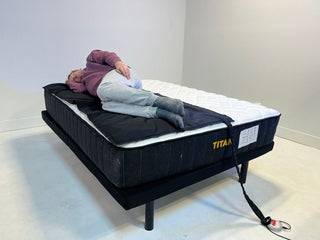
FAQs
In summary, the best mattress for pressure relief depends on your body type, sleep style, and comfort preferences—but prioritizing quality materials, balanced firmness, and proper support will ensure you wake up feeling refreshed, aligned, and pain-free.



